Dual Language and Multilingual Education
Dual language education is an effective program for developing language and content in two languages while students develop sociocultural competence.
The three pillars, or goals, of dual language education are the promotion of
- bilingualism and biliteracy,
- grade-level academic achievement in both languages, and
- sociocultural competence.
Students maintain their first language while adding a second language, and they develop pride in their own language and culture while developing an understanding of the cultures and traditions of others.
CAL provides professional development on a variety of topics related to effective dual language programming and instruction and conducts evaluations of dual language programs to improve effectiveness. CAL also provides technical support for developing new programs and for helping transitional programs convert to full-fledged dual language programs.
Dual Language Program Technical Support and Evaluation
In addition to our professional development services, CAL has expertise and experience in providing long-term support for dual language programs. The process begins with district requests for review of their programs, which usually take the form of a needs assessment or evaluation to allow us to tailor our technical assistance and professional development to most effectively meet the needs of districts and schools. CAL provides longer term support to DL districts in the following categories:
- Districts that are embarking on the journey to develop dual language programs
- Districts that have been in existence for many years but are looking to enhance their programs
- Districts that have had early or late exit transitional programs and want to transform those programs to fully dual language programs.
In each of these scenarios, a needs assessment/evaluation is conducted, a strategic plan is created for development, enhancement, or transformation by the district with stakeholder input and with guidance from CAL, and the strategic plan is implemented. Usually, professional development (training and job-embedded coaching) from CAL begins before the strategic plan is finalized.
Services
Drawing on its decades of research in language education, CAL offers services to schools and districts that are planning or implementing bilingual, dual language, or two-way immersion (TWI) programs. All of our services are rooted in research-based tools and approaches, and are tailored to your needs. CAL offers professional development on the critical issues facing educators in dual language education settings. CAL can help develop or refine a dual language program by working with key stakeholders in a collaborative environment. Evaluation services can be tailored to your program’s needs with a wide range of evaluation approaches including quantitative, qualitative, or mixed methods. Contact CAL to discuss your interests.
Institutes: Professional Development Opportunities in Washington, DC Metro Area
CAL offers four institutes of special interest for educators interested in dual language education.
- CAL SIOP for Dual Language Programs: Developing Academic Language & Content in Two Languages: This institute is designed to help participants develop and deliver CAL SIOP Model lessons in bilingual programs. No prior knowledge of the SIOP Model is required for participation.
- Foundations of Dual Language Instruction: This institute introduces practitioners to the research base for effective dual language instruction with a focus on practical applications for classroom use. Strategies and hands-on activities will be shared that promote student interaction to build receptive and productive language skills in two languages while building content knowledge in order to develop bilingualism, biliteracy, and multicultural competence.
- Leading Dual Language Programs for Student Success: A CAL Leadership Institute: This institute is designed to help educators strengthen their leadership by gaining a solid understanding of the benefits of dual language education and learning how they can develop an effective dual language program that promotes student success on their campus.
- Spanish Literacy Institute: Each two-day Spanish Literacy institute is designed to provide participants with effective methodologies for teaching academic language and literacy in Spanish to students in a wide variety of K-8 educational setting where Spanish is the language of instruction. Classroom practices are framed by an understanding of Spanish language arts standards and linguistic features in Spanish.
Learn more about these institutes and view our full calendar.
National Dual Language Forum (NDLF)
CAL is proud to be a member organization of the National Dual Language Forum (NDLF). You may link to the NDLF website here:
Projects
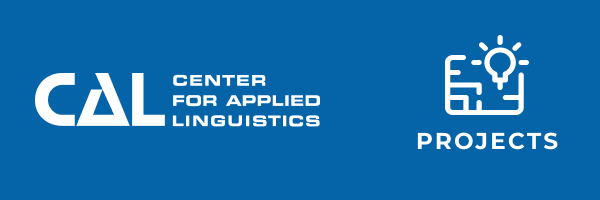
Funder: Funding: Grant from the International Research & Studies program of the U.S. Department of Education (P017A170028) In 2017, CAL was granted by the International Research & Studies program of the ... Read more
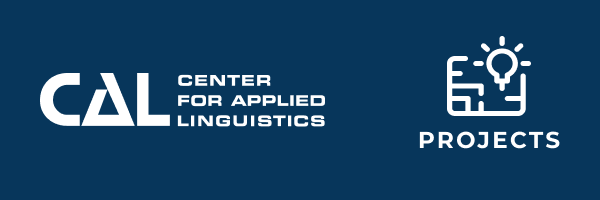
Funder: CAL conducted an in-depth review of the dual language, biliteracy curriculum in use in ACPS for grades K-2. The evaluation included sites visits to the dual language schools to observe ... Read more
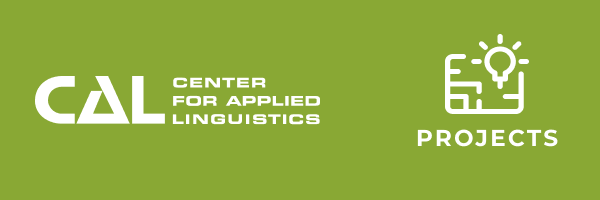
Funder: DLME conducted a needs assessment of dual language immersion and transitional bilingual programs in 2020.The needs assessment has led to CAL’s facilitation of the development of a strategic plan for ... Read more
News and Resources
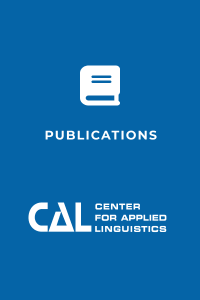
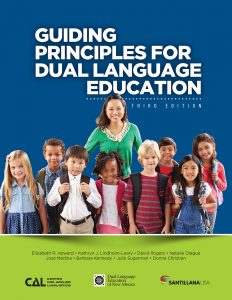
Guiding Principles for Dual Language Education has been used for over a decade by dual language programs and educators across the United States as an effective tool for planning, self-reflection, and continual improvement.
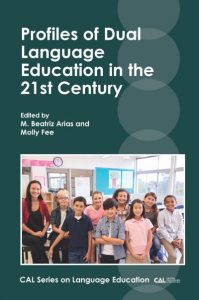
Editors: M. Beatriz Arias and Molly Fee
Published by Multilingual Matters
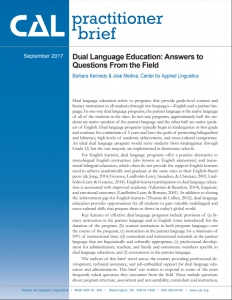
Barbara Kennedy & Jose Medina, Center for Applied Linguistics
September 2017


